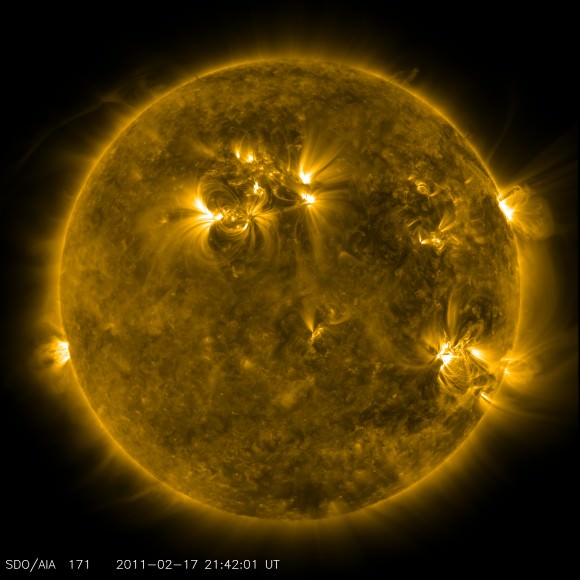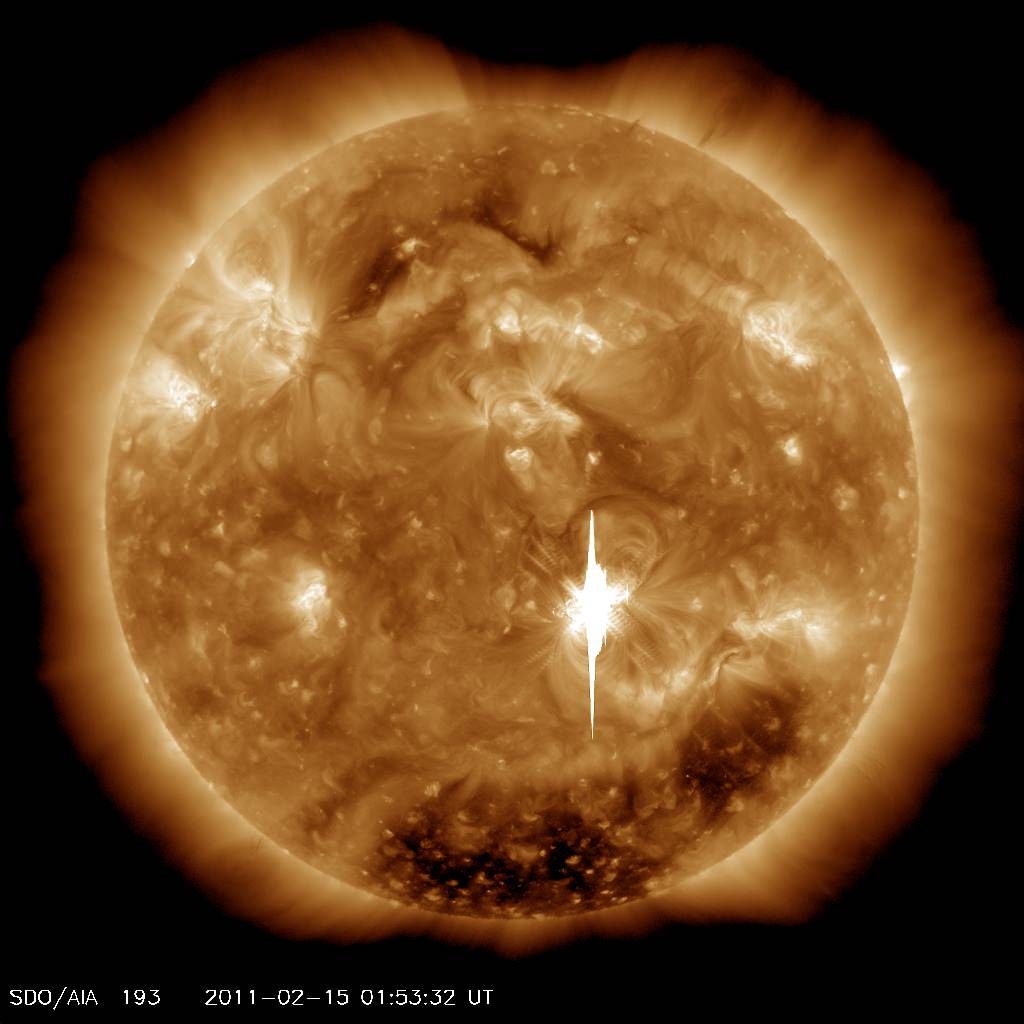Just in time for Valentine’s Day, [and the Stardust flyby of Comet Tempel 1] the Sun erupted with a massive X-Class flare, the most powerful of all solar events on February 14 at 8:56 p.m. EST . This was the first X-Class flare in Solar Cycle 24 and the most powerful X-ray flare in more than four years.
The video above shows the flare as imaged by the AIA instrument at 304 Angstroms on NASA’s Solar Dynamics Observatory. More graphic videos below show the flare in the extreme ultraviolet wavelength of 193 Angstroms and as a composite with SOHO’s coronagraph.
Spaceweather Update: A CME hit Earth’s magnetic field at approximately 0100 UT on Feb. 18th (8:00 pm EST on Feb. 17th). Send me or comment your aurora photos
The eruption registered X2 on the Richter scale of solar flares and originated from Active Region 1138 in the sun’s southern hemisphere. The flare directly follows several M-class and C-class flares over the past few days which were less powerful. The explosion also let loose a coronal mass ejection (CME) headed for Earth’s orbit. It was speeding at about 900 Km/second.
CME’s can disrupt communications systems and the electrical power grid and cause long lasting radiation storms.
According to a new SDO update, the particle cloud from this solar storm is weaker than first expected and may produce some beautiful aurora in the high northern and southern latitudes on Feb. 17 (tonight).
According to spaceweather.com, skywatchers in the high latitudes should be alert for auroras after nightfall Feb. 17 from this moderately strong geomagnetic storm.
Send me your aurora reports and photos to post here
Sources: SDO website, spaceweather.com
NASA SDO – Big, Bright Flare February 15, 2011
Video Caption: Active region 1158 let loose with an X2.2 flare at 0153 UT or 8:50 pm ET on February 15, 2011, the largest flare since Dec. 2006 and the biggest flare so far in Solar Cycle 24. Active Region 1158 is in the southern hemisphere, which has been lagging the north in activity but now leads in big flares! The movie shows a close-up of the flaring region taken by the Solar Dynamics Observatory in the extreme ultraviolet wavelength of 193 Angstroms. Much of the vertical line in the image and the staggered lines making an “X” are caused by the bright flash overwhelming our imager. A coronal mass ejection was also associated with the flare. The movie shows activity over about two days (Feb. 13-15, 2011). Since the active region was facing Earth, there is a good chance that Earth will receive some effects from these events, with some possibility of mid-latitude aurora Feb. 16 – 18. Credit: NASA SDO
X2 flare Video combo from SDO and SOHO
Video caption: The X2 flare of Feb. 15, 2011 seen by SDO (in extreme ultraviolet light) enlarged and superimposed on SOHO’s coronagraph that shows the faint edge of a “halo” coronal mass ejection as it races away from the Sun. The video covers about 11 hours
[/caption]



It’s not very considerate of the sun to finally do this during a full moon.
When I looked outside yesterday, I thought, yipee Northern light.
But soon I realized that it was the moon lighting the sky.
I saw it once and I really loved it.
I ran into the same thing. The moon just dominated most of the night sky. Unfortunately we don’t see the northern lights nearly enough down here but when I have it’s been a lifetime memory.